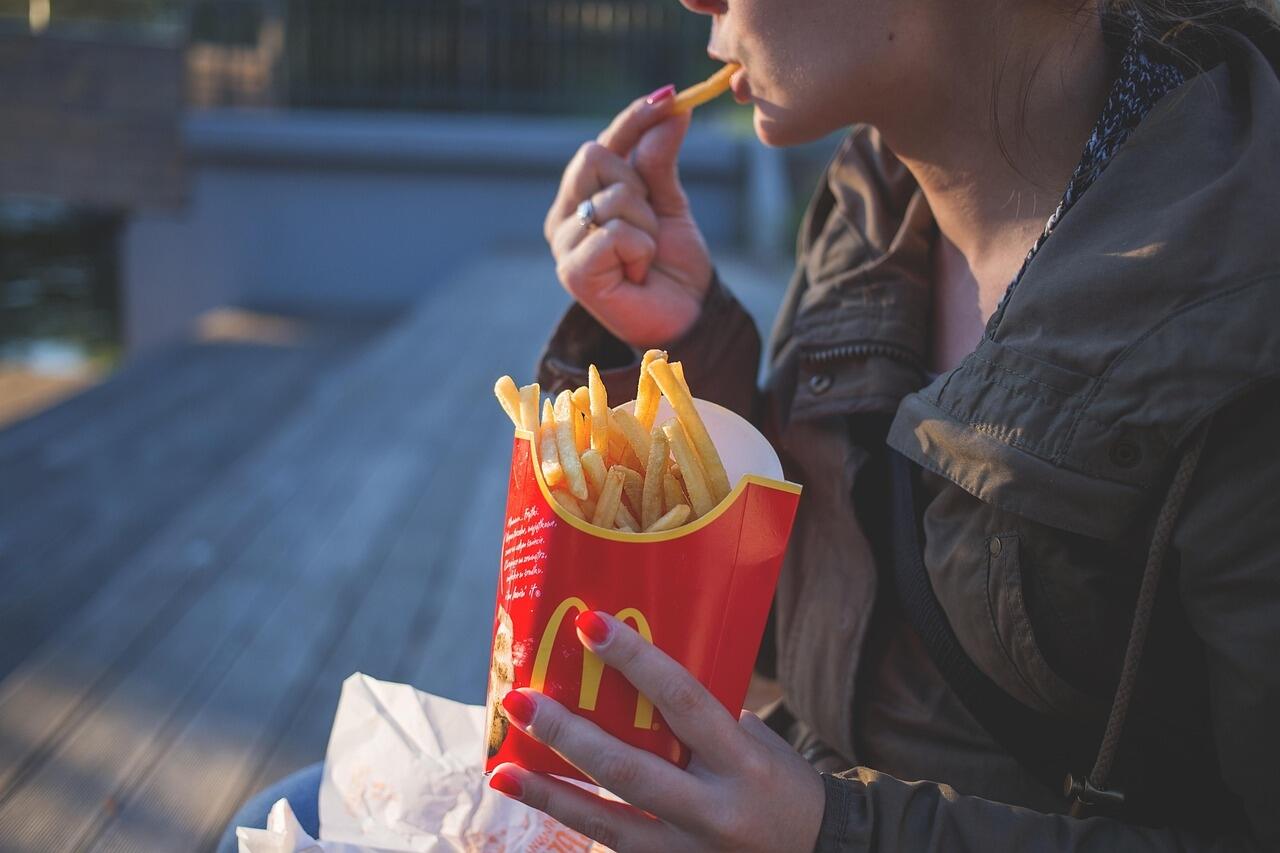He’s all in on AI
Govt money will fund NVDA and others of the Mag7 to insure the market doesn’t crater.
Govt money will fund NVDA and others of the Mag7 to insure the market doesn’t crater.




Federal bureaucrats continue to insist that inflation is low, but everyone can see that is simply not true.The University of Michigan’s consumer sentiment survey showed that 44% of middle-income respondents said their financial situation was worse than it was a year ago, while 23% said it was better, based on a three-month average ending in September. Those who feel worse off overwhelmingly said it was because of higher prices.
$4.19 for a carton of medium fries is obscene!McDonald’s Price Increases from 2019 to 2024:
Medium French Fry $1.79 -> $4.19
McChicken $1.29 -> $3.89
Big Mac $3.99 -> $7.49
10 McNuggets $4.49 -> $7.58
Cheeseburger $1.00 -> $3.15
Some of this is over a 200% increase in price. This isn’t inflation — it’s legalized robbery.
You may think that you will just switch to turkey.Tyson Foods will close a major beef plant in Lexington, Nebraska, with about 3,200 employees in January after U.S. cattle supplies dropped to their lowest level in nearly 75 years, the meatpacker said on Friday.
The closure in the heart of cattle-feeding country signaled that supplies will remain tight, forcing meatpackers to pay steep prices for cattle to process into steaks and hamburgers.
When talking heads on television tell us that “inflation is low”, I just want to scream.The USDA recently projected that wholesale prices for frozen whole turkey hens will reach $1.32 per pound in 2025. That’s a 40 percent increase from 2024’s price of 94 cents per pound.
“The 2025 rise in price is a response to lower production with HPAI pressures combined with steady demand,” according to a report from the American Farm Bureau Federation.
Take a close look at those numbers again.Homeowners need an annual income of $74,508 to afford a median-priced home in rural U.S. counties, up a staggering 105.8% from before the COVID-19 pandemic. Prior to the pandemic, rural buyers only needed to earn $36,206, according to Redfin’s analysis, which compares the third quarter of 2025 with the third quarter of 2019.
The income needed to afford a median-priced home in suburban counties rose 90.9% to $102,120 during that same period. Previously, potential buyers only needed an annual salary of $53,482. The income needed to afford a home in urban counties climbed 87.5% to $118,300. Buyers needed an annual salary of $63,103 prior to the pandemic.
In the old days, you could buy an entire house for $50,000.Car prices are trending up and the average cost of a new car is at an all-time high, approaching the $50,000 mark for the first time.
The average transaction price for a new vehicle in October was $49,105, according to data from Edmunds.
I feel very badly for college graduates that are searching for work in this very tough environment.Rising youth unemployment could be an “early indicator that the economy is slowing down or maybe even heading towards a recession,” said Anders Humlum, assistant professor of economics at the University of Chicago.
A college degree is often considered the best pathway to a well-paying job, but that may no longer be as true as it once was, experts say.
“For the first time in modern history, a bachelor’s degree is no longer a reliable path to professional employment,” Gad Levanon, chief economist at the Burning Glass Institute, told CNBC.
When less stuff is being moved around the country, that means that the economy is slowing down.There are not as many goods moving around the country. Ship counts from Asia to the US are down roughly 30% from last year. Railcar loadings are down roughly 6% against last year. The trucking industry also continues to see shrinking capacity. If there are fewer things to move around the country, then the industry will likewise need fewer drivers, loaders, and various workers. Idle trains and empty containers don’t need a lot of people to mind them.
The mood of the entire country has changed dramatically.A report by Primerica found that in the third quarter of 2025, just 21% of middle-income Americans believe they’ll be better off financially in the next year, while 34% believe they’ll be worse off and 33% expect their situation to remain the same.
Those figures are notably more pessimistic than the firm’s data from the third quarter of 2020 showed, when 33% of middle-income Americans thought they would be better off financially in the next year versus just 17% who thought they would be worse off and 40% expected they would be about the same.
It took a long time for us to get here.The effort to keep up with higher prices feels relentless to Teri Kopp, who lives in Southbury, Conn., and works as an administrator at a synagogue. “I’m tired,” she said.
Kopp and her husband Bill, an HVAC technician, earn a combined $115,000 a year. They often sit in the dark with only strings of LED lights on to save on electric costs. She is considering painting rocks to send to friends as Christmas gifts. Their biggest vacation this year, a road trip to Maine, was mostly covered by cash back from a shopping-rewards program.
Kopp, 59 years old, doesn’t see any way to quickly pay off the $15,000 in credit-card debt the family took on largely to cover medical bills for knee surgeries. She also has $30,000 in debt from her daughter’s undergraduate degree in biology, which has yet to yield any job offers in a tough labor market for new graduates.
I wouldn't try to predict will will happen, but history shows what could happen.Young people are being hit particularly hard, and we are being told that this is the toughest market for college graduates in a very long time…
